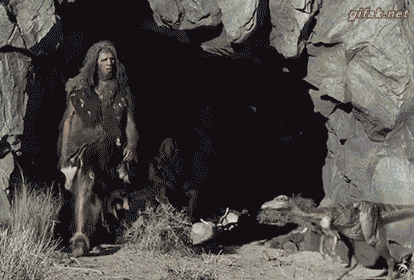
Posted on 03/03/2016 7:12:14 PM PST by MtnClimber
When you look back across the history of art, things go missing. Interesting things.
For example, it seems ancient people didn't have a word to describe the color of the sky. The "b" word-blue? They didn't use it. That’s the argument, anyway......
It wasn't until much later, when blue paints were invented (which happened in Egypt), that "blue" became a descriptor—when you could buy or sell it.....
The Newest Missing Thing
That was our guess. And now-ta-da-I've got another one, a second thing that ancients saw all the time but failed to describe. And this one is even more basic.
I'm talking about plants.
Take a look, a long rambling look, at the cave paintings that Paleolithic artists drew as far back as 40,000 years ago. There are hundreds of them, in Spain, in France, all over the world. What do you see?
There are, says Richard Mabey in his new book, The Cabaret of Plants, "galloping horses and rippling bison," reindeer, cattle, the occasional rhino—animals you might eat, animals you might chase, or simply admire, maybe even worship …
(Excerpt) Read more at phenomena.nationalgeographic.com ...
Cavemen were better hunters than metrosexuals.
Art?
I am an art-adorer! I adore art.
GGG ping. :)
Maybe the artists were recording events that had already happened such as successful hunts on their prey animals.
Real men are not vegans. We have the meats!
Isn’t vegetarian an ancient caveman word for “bad hunter?”
In Japanese there was no word for green until recent times. Instead green was considered a shade of blue. It’s so recent a change in fact that even now my wife and her family will still say ao or aoi when referring to some definite shades of green instead of the more precise midori. Languages evolve as we live and learn.
But in Japan there is a word for sushi.
***the color of the sky.***
I was born and raised under the clear High Plains skies yet NEVER noticed the sky was blue till a kid in my first grade class started coloring it in and I asked...”What is that!”
He pointed out and said...”The Sky!”
I WAS SHOCKED! THE SKY WAS BLUE AND I HAD NEVER NOTICED!

That seems like a crazy argument. Before they had paints, didn’t they see blueberries or blue flowers?
The blue color (or the lack of it) mentioned in the article was interesting. In the Oriental Museum in Chicago, they had some of the “Blue Bricks of Babylon” when I was there 45+ years ago. How exactly the blue color was made is still not certain. I don’t think there were many blue natural dyes, and purple was VERY rare and expensive. Therefore, it was “royal” until the mid-late 1800’s, when organic chemistry made purple dyes relatively inexpensive and common people could have purple dyed clothes (which, naturally, caused a purple clothing craze).
This is interesting:
https://en.wikipedia.org/wiki/Tyrian_purple
They did not have art of green plants or trees either, from the article as I was not there.
Those crazy Japanese have a different word for everything
Maybe they just forgot to move their hands as they spoke.
A blue triangle once saved my life.
Thanks To Hell With Poverty. Cave art ping.
by Richard Mabey
Kindle Edition
CD Audiobook, MP3 Audio, Unabridged
In her Plato Prehistorian: 10,000 to 5000 B.C. Myth, Religion, Archaeology, Mary Settegast reproduces a table which shows four runic character sets; a is Upper Paleolithic (found among the cave paintings), b is Indus Valley script, c is Greek (western branch), and d is the Scandinavian runic alphabet.
Disclaimer: Opinions posted on Free Republic are those of the individual posters and do not necessarily represent the opinion of Free Republic or its management. All materials posted herein are protected by copyright law and the exemption for fair use of copyrighted works.